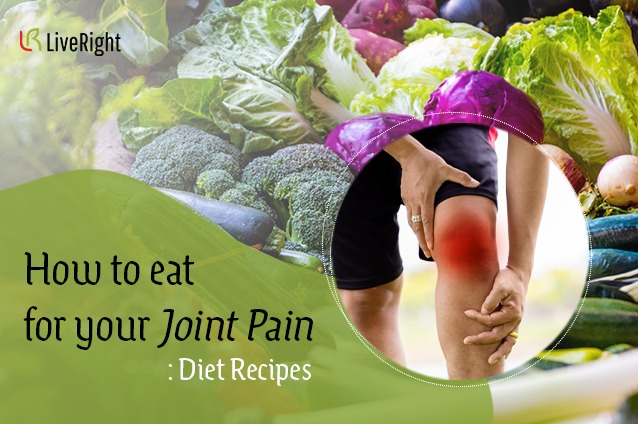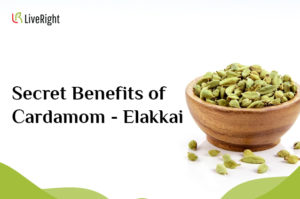Last updated on August 21, 2024 by Dr. Subashri Thanigaivel
Food is the best medicine in this entire world.
Cliche advice in every Indian household.
Even in this 21st VUCA world century, nothing chases the common cold just like a mother’s Rasam, and also the “you-know-who” virus from 2020 had no chance against a healthy diet and herbal food guide.
Diet recipes for joint pain and its disorders are impeccable in curing them at the root.
Despite eating healthy, sometimes, your joint pain doesn’t go away because the way you cook them might not retain the nutrients. Also, it is essential to understand the symptoms of your joint pain before opting in for the diet since each of them has a different effect on your joints.
Yes, diet serves as medicine only when intaken in the right way.
Diet is crucial, but eating it in the right way is inevitable.
If you are aimlessly stuffing some random raw green leafy vegetables, chances are there, you are adding up to your joint pain rather than cutting it down.
Diet as medicine is more than a century-old practice in India and other Asian countries. The ancestral history holds scientific proof for curative treatment protocols for many chronic conditions.
Ancient scientists and physicians from our land drafted the medicine system only with the plants and herbs which later came into day-to-day eating practices at correct proportions. At present, these scientific proofs are the serving blueprint to many fluffy lifestyle business brands and to all the other forms of medicine.
Ayurveda, the foremost medicine system, invented diet treatment methods to help your body develop natural immunity to the illness. Also, the traditional medicine system holds high medical efficacy, compatibility, and curative rate because the medicines are made of natural herbs.
Also, the medicines have a synergy drug metabolism (holistic approach) which makes them adverse-free.
RELATED: Importance Of Healthy Eating For Arthritis
Foods that cause joint pain
The primary symptom of any kind of arthritis begins with joint pain. Joint pain can occur due to four reasons–osteoporosis, swollen joints, inflammation in joints, and less lubrication. AGE is the deadly molecule that increases the risk of arthritis and causes tremendous pain in your joints. This molecule is released by the following food
- Packaged and processed foods
- Tetra pack Juices
- Carton box meals
- Ready to cook food
- Microwaved meals
- Deep-fried or shallow fried meat, chicken, fish, and vegetables
- Carbonated drinks
- Added preservatives, color preservatives, and flavoring agents
- Fried tubers
- Raw salads, raw sprouts, and fermented food
When you consume this food for long periods, it affects your kidney and liver because of the absorption of the toxins present in the above food.
Diet For Joint Pain – Recipes
Your joint pain can have more than one of the following reasons. It is essential to understand what is the reason behind it before you start your diet.
- Osteoporosis – less calcium in the joint bone. The bone is not strong enough to move around and every time you try to move your joints, it results in pain.
- Swollen Joints – Swollen Joints are also an effect of inflammation or an increased fluid around your joint. It leads to a tender joint which can be painful even on touch.
- Inflammation in joints – A severely inflamed joint causes redness on the skin too. High levels of toxins in your body cause inflammation.
- Less Lubrication – The minimal or absence of lubrication fluid in the joints. It leads to an increase in friction between the bones while movement and causes pain.
Food for knee strengthening
Pirandai thuvaiyal (Chutney) – Cissus quadrangularis
Cissus quadrangularis is one of the best medicines and food for strengthening your knee because it improves bone health. It has properties that lead to mineralization which ultimately increases your knee strength.
However, Pirandai must not be consumed without cooking or in chemical extract since it causes side effects like dry mouth, diarrhea, or vomiting.
It is best to cook it to a chutney consistency along with few other ingredients to alleviate your joint pain. Pirandai is the source of food for knee strengthening.
How to cook it?
- 3/4 cup Pirandai (cleaned and chopped)
- 2 tbsp Sesame seed oil
- 3 tbsp Urad dal
- 2 tsp of pepper powder
- 1/2 inch Ginger
- Old Tamarind (small piece)
- Curry leaves (a sprig)
- 3 tbsp Grated coconut
- Salt needed
Fry all the ingredients in sesame oil in a low-medium flame, because deep frying in high heat leads to producing the AGE molecule that triggers the release of inflammatory agents.
Once they are fried, grind them into a smooth or coarse paste and add water in very little quantity. It is best to intake this as a paste format during breakfasts. Avoid intaking them at night to reduce the heavy load of digestion for your body. This chutney is also the best food for rheumatoid arthritis since the herb Cissus quadrangularis is the best anti-inflammatory agent.
Food To Reduce Swollen Joints
Tubers are one of the foods that are prevalently avoided for joint pain patients, but some tubers help to reduce the swollen joints when cooked right.
Yam Poriyal
Although yam is under the list of foods that cause joint pain, you can still eat them when you cook as per the below instructions.
How to cook it?
- 500 grams yam (Suran/Senai/Ratalu), cut into thin 1/2 inch slices
- 1/2 teaspoon Mustard seeds (Rai/ Kadugu)
- 2 teaspoon White Urad Dal (Split)
- 2 Dry Red Chillies
- 1/4 teaspoon Asafoetida (hing)
- 2 sprig Curry leaves, torn
- 1/2 teaspoon Turmeric powder (Haldi)
- 3 tablespoons Sesame Oil
Par-boil the yam in boiling water. Filter the water once the yam is cooked 75% in the steam. Now in a hot pan, stir fry the mustard seeds, urad dal, curry leaves, asafoetida, turmeric powder, and red chilies using sesame oil in the low-medium flame. Add the par-boiled yam and cook through till it is soft and tender.
Why eat in this way?
Tubers will release molecules that alter metabolism and releases inflammatory enzymes into your blood upon cooking in the high flame using oil.
But if you par-boil them before cooking or frying, they retain the proactive nutritional components to soften your swollen joints. It can remove the excess fluids surrounding and reduce the pain too.
Note: You can cook carrot and also Pidi Senai in the same way
Food Reducing Inflammation
The excess toxin needs to be removed with a solid detox and regular internal cleansing. Everybody is exposed to inflammation but the quantity present will trigger the chronic or acute illness.
For joint pains, excessive toxins trigger inflammation around the joints and eat up the fluid and tissues.
Detox Drinking Water
Herbal Powder: Shatavari, Shallaki, Giloy, Amla, Ashwagandha. (any one of them)
How to cook it?
Boil about 5g of anyone of this powder in 1.5 liters of water and then let it rest for 10 minutes. Don’t filter the liquid. Intake this 1.5 liters three times a day at regular intervals. (You can use this as your normal drinking water). You can drink this for 15-25 days. This cleansing can be done 3 months once for general people who experience mild joint pains. But for a diagnosed patient, the therapeutic duration will be prescribed by the doctor.
Why consume it as medicated water?
Internal cleansing is the form that is practiced to allow your liver to unload its prolonged working. So to help your liver to remove the toxins and also from across the body, liquids will easily help than solids. Especially lukewarm medicated water is highly efficient because it quickens the metabolism.
Spinach Seasonings
Another easy way to reduce inflammation is by adding healthy seasonings in Sambhar, Chutneys, Curries, and for variety rice.
How to cook it?
Any spinach – a handful or ¼ cup (Lachha Kottai Keerai (Cabbage Tree), Mudakathan Keerai (Balloon Vine Plant), Pasala Keerai (Palak Spinach) )
Mustard seeds – ½ tsp
Urad Dal – ½ tsp
Sesame oil – 2tbsp
Add oil to a pan, add mustard seeds, and urad dal. Once they turn golden brown add the spinach and turn off the stove. Pour this seasoning over your dish before serving. This helps to lift the flavor of your dish too.
Breakfast Recipes For Inflammation
Spinach Dosa
How to cook it?
Raw rice (pacharisi) – 2 cups soaked
Spinach – anything
Mix the spinach and raw rice with the help of a blender by adding a little quantity of water. Grind till you get the consistency of a dosa batter. Prepare dosa with sesame oil and enjoy it with coconut chutney.
Note: Please don’t keep the batter in the fridge.
You can also replace the Raw Rice with Ragi or horse gram.
Food to Improve Joint Lubrication
Another common reason for joint pain is the absence or decrease of the synovial fluid in the joint. This fluid is the reason for your lubrication and keeps your joints mobile and flexible. When this lubrication is reduced it results in osteoarthritis and osteoporosis too.
To improve the joint lubrication, you need to go for boiled food rather than stir-fry or shallow fry. The usual food advised in every diet chart of joint pain is Uluntha Kali. The Urad dal flour cooked using cold-pressed coconut oil releases anti-inflammatory agents.
Aviyal
Aviyal brings the lightness of both sides of the joint pain. Firstly the whole process is steam. Secondly, it is full of vegetables that are rich in water content. Both the process makes Aviyal as the best foods for rheumatoid arthritis.
But it is important to note that curd or milk should be replaced with lemon juice. You can increase the gravy consistency using coconut.
How to cook it?
1 cup coconut (fresh / desiccated)
1 tsp cumin
4 green chili
2 cup of mixed vegetables- mango, drumstick, long beans, cucumber, carrot, tindora, yam, and carrot
2 cups water
salt to taste
few spinach leaves
- In a small blender take coconut, cumin seeds, and green chili and blend to smooth paste. keep aside.
- In a large Kadai cook potatoes with salt and water and further add mixed vegetables of your choice.
- Add curry leaves, turmeric and mix well.
- Cover and cook the veggies for 7 minutes or till they are cooked well.
- Add prepared coconut masala and boil for 5 minutes.
- Turn off the flame and add lemon juice.
- Prepare the tempering by heating oil and add mustard seeds, urad dal, dried red chilis, spinach leaves, and asafoetida.
- Further, pour the tempering onto the avial and mix well.
- Finally, serve with the main dish.
Why eat in this way?
Aviyal is the best way to eat vegetables for joint pain because it has taste, health, and also nutrients that help your joint fluid. It is a good rejuvenation for joint pain since it removes the toxins and maintains a good amount of lubrication in the joints.
Garlic Chutney
This vegetable is a pure medicinal soldier because it removes the cytokines–an inflammatory agent. After metabolized, garlic kicks the inflammation. It also boosts the immune system to protect the synovial fluid instead of eating it.
But garlic should be intake along with sesame oil and ginger because of its high pitta properties.
This quick garlic chutney is at the top of the list of the best food for knee strengthening because it is quick to make and delicious to eat.
How to cook it?
Garlic – 20 pods
Ginger – 2 inch
Dry Red Chilli – 3
Mix all the ingredients in the blender and grind till they become a smooth paste.
In a Kadai, add sesame oil and add the paste to the oil and saute the paste for 5 to 10 minutes. Add water to your consistency and simmer for 5 minutes and serve with millet dosa or idli.
Conclusion
Do you have any special vegetable or millet which you don’t know how to cook and eat for your joint pain?
Let us know in the comment below and we will share a recipe for you




